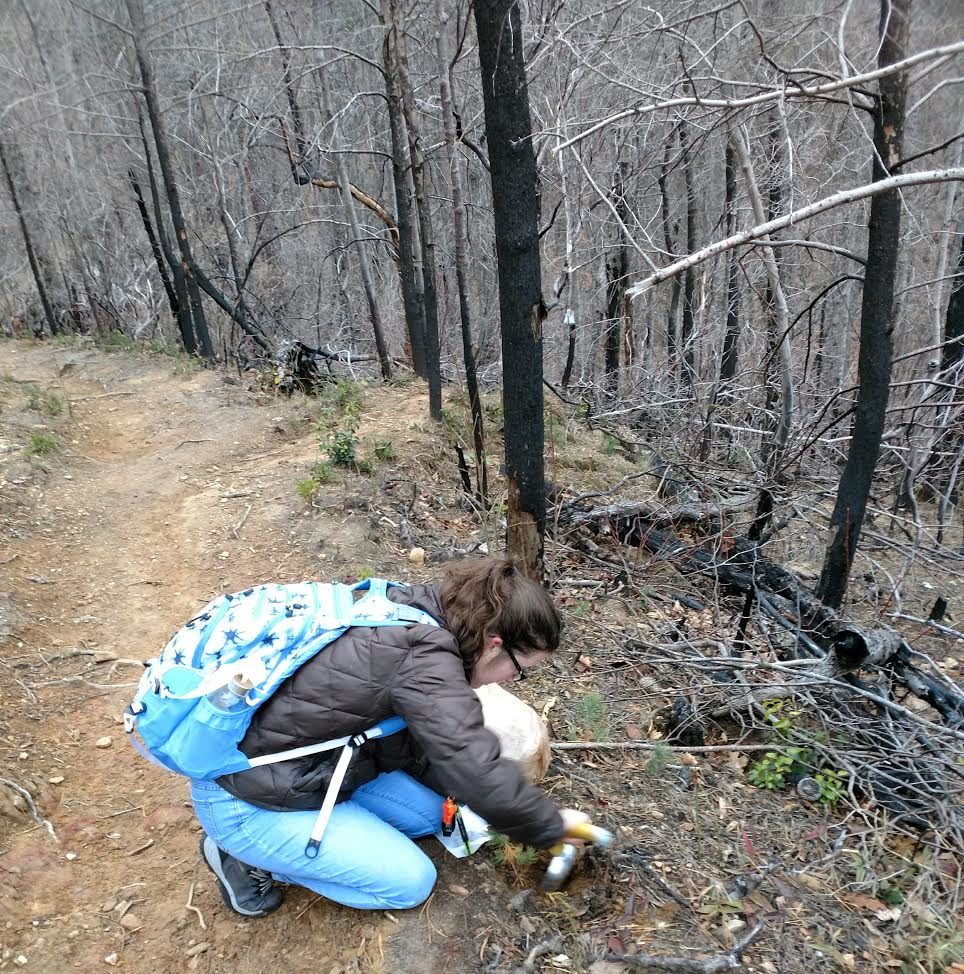by Julie Dodd
Flying squirrels, salamanders and pine seedlings in the Great Smoky Mountains National Park all have benefitted from research assistance grants.
Research assistance grants are one way FOTS helps fund and promote research in the Park. Friends of the Smokies is seeking donations to provide $8,000 for research assistance grants for 2019.
Grants help start important GSMNP research
“Great Smoky Mountains National Park prides itself in being one of the most researched National Parks in the system,” explained Paul Super, Science Supervisor at the Appalachian Highlands Science Learning Center at Purchase Knob. “This research provides a firm basis for management decisions on a daily basis.”
The research assistance grants are an important part of getting research started.
“Sometimes researchers need a little help getting started with research of interest to the Park,” Super said. “As little as $2,000 can help a graduate student or professor get a start on data collection necessary to compete for larger grants or may allow a researcher to extend the focus of their own research to address an issue that is of interest to the Park.”
DNA analysis of GSMNP plants
An example of such grant-assisted research that is benefitting the Park is a study of plant populations being conducted by Dr. Jennifer Rhode Ward, associate professor at the University of North Carolina-Asheville, and Dr. Matthew Estep, assistant professor at Appalachian State University.
Their research uses next-gen sequencing of DNA to examine eight GSMNP plant populations. Two of those plants are being considered for limited harvest by the Eastern Band of Cherokee, one is an invasive exotic vine, and five are of conservation concern.

Next-gen sequencing is a way to figure out the DNA composition throughout a plant’s genome, Ward explained.
“Once we know the DNA composition, we can distinguish among closely related individuals,” Ward said.
“That DNA information allows us to see the amount of genetic diversity in a population. In general, populations with higher diversity are healthier. Those with lower diversity might be sacrificed to harvest.”
“Patterns of diversity can also tell us if an invasive species has been introduced one or multiple times, and if natural selection is acting on those populations, reducing their genetic diversity, or not.”
No genetic markers existed to assess plant populations
“Population genetic markers have not been developed for any of these species,” Ward said, “which means that GSMNP and others have been unable to assess whether populations are genetically robust or imperiled.”
A research assistance grant made the next-gen sequencing project possible, Ward said. Their research study is titled “Developing Genetic Markers to Assess Imperiled Plant Populations in the Great Smoky Mountains National Park.”
Undergraduates gain molecular genetic experience
“Screening potential genetic markers is labor-intensive, but we have many undergraduate students who are eager to gain molecular genetic experience,” Ward said.
The research project will take three years, Ward said. Two years are needed to develop the genetic markers and one year to test the markers on field populations.
Next-gen sequencing is costly
“Our limitation is funds,” Ward said.
“Next-gen sequencing yields invaluable data but is costly. With monies to support this data collection step, we are able to develop these essential monitoring tools.”
Not only will GSMNP be able to use the research data to make decisions about plants in the Park, but Ward is able to use the data in her teaching at UNC-Asheville.
“To date, the next-gen sequencing data have been used in my 400-level genetics class to teach students about bioinformatics. Two undergraduate research students have also used the data to inform their senior thesis projects,” Ward said.
Salamanders, flying squirrels, fire fungi
Salamanders, flying squirrels, and fire fungi were subjects of other research projects that have been supported by research assistance grants:
- Piloting a Technique for Using Ultrasonic Sound Detectors to Monitor Endangered Carolina Northern Flying Squirrel Activity – Dr. Corinne Diggins, fellow in the Global Change Center at Virginia Tech.
- Short-term Effects of Wildfire on Salamander Populations in Great Smoky Mountains National Park — Dr. William Peterman, assistant professor at Ohio State University, Dr. Daniel J. Hocking, assistant professor at Frostburg State University, John A. Crawford, wildlife ecologist at the National Great Rivers Research and Education Center, and Dr. Joseph R. Milanovich, assistant professor at Loyola/University of Chicago
- The Role of Fire Fungi on Pine Seedlings’ Regeneration after Wildfire — Dr. Karen Hughes, professor at University of Tennessee-Knoxville. The photo at the top of this post is of UT undergraduate Alexis Case, examining pine seedlings in an area of the Park impacted by wildfire.
If you are interested in supporting research that can make a difference in the wildlife and plants in GSMNP, please donate to FOTS for research assistance grants.
